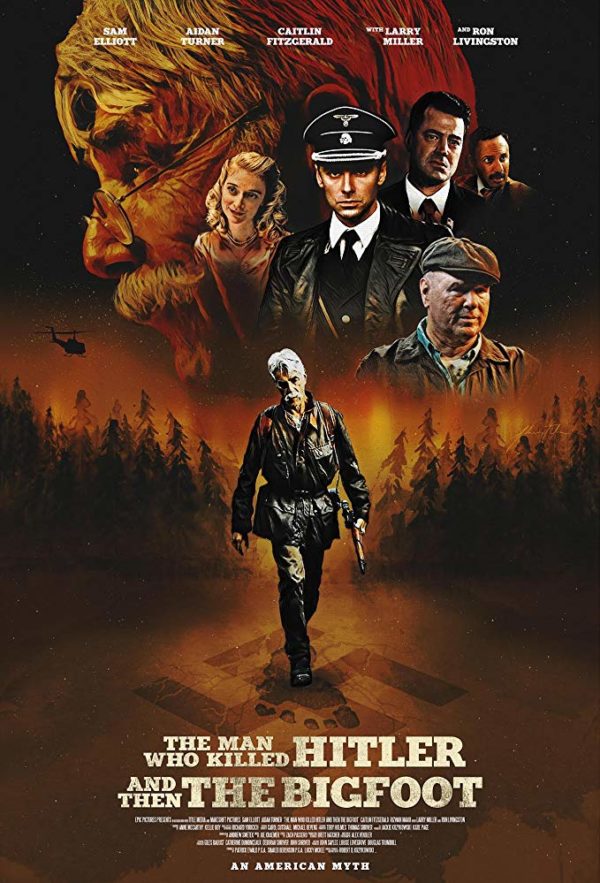
Really, the title alone would have been enough to get me to watch this movie.
Throw in Sam Elliott and there’s no question at all I will.
I’m glad I didn’t let this one sit around in a queue forever. In a sensible hour and thirty-seven minutes, it tells the story of one man’s adventures in a way that doesn’t really feel like any of it’s an adventure. And that’s a good thing.
The supporting cast does a great job of keeping what could be an utterly fantastical and sloppy story grounded in a bittersweet, realistic way.
The Plot
The Man Who Killed Hitler and then Bigfoot is pretty much the plot. All right there in the title. Sure, it skips over a bunch of years in the middle–and there may, or may not, be some other stories to tell–but those two singular events in the life of Calvin Barr (Elliott) are all you need to know to understand what kind of man he is.
Wait. Don’t jump to any conclusions. You may think you know what kind of man would be the one to kill Hitler (and then Bigfoot), but you’d be wrong. Barr is not some larger-than-life action hero full of bravado and bull-piss. No, he’s the kind of Character Elliott often plays: low key, down to earth, and just a generally decent guy.
So how does someone like that end up killing Hitler? (Or Bigfoot, for that matter.)
Mostly by just doing what he knows is the right thing, even if he doesn’t like it.
And because he is, indeed, that good at it.
The story telling alternates between Barr as a younger man (played by Aidan Turner, who doesn’t quite look like a young Elliott, but acts believably enough that it works) in the time around World War II, and Elliott’s much older Barr, just trying to live his golden years quietly.
“…we are both cursed.”
That storytelling device, shifting between “then” and “now,” is really easy to overuse or use poorly. We see that on TV all the time (in no small part thanks to Lost, which did it both the best and the worst during it’s run). Here, a few of the transitions are a little rough, but, generally, they work pretty well.
Both hunks of the story flow very well on their own. It’s a slow burn on all counts. Don’t go in expecting much action. This is a character piece above all else. And we get a bunch of characters to chew on along with Barr.
One of the more memorable ones is the Russian who helps Barr get behind the German lines so he can, ultimately, make his way to the top of the Third Reich. Barr, after having traveled far (walking–which is an ongoing theme in the film), has grown a beard very unbecoming of a proper German officer.
The Russian tells him a story, about how the shave can be prophetic, and that, if it goes completely perfectly, without a nick or cut, Barr’s mission will be a failure. Any cut has to happen accidentally, otherwise you cross fate and both are cursed.
It’s a very tense and well-done scene. It adds a bit of a mythic feel to the whole story–as does a lot of the cinematography–but not so much that it feels any less grounded in reality.
The Verdict
This is an odd little film that feels smaller than the story would make you think it is. It’s a kind of weird mix that works. In no small part due to Elliott (and Turner) doing such a great job of remaining consistent with the kind of person Barr is.
Without question it tells the stories listed in the title, but it does so in ways you won’t quite expect and leaves you feeling… satisfied, but still longing. In a very real, bittersweet way.
I really liked it. If you’re in the mood for something kind of low-key and different (and you’re generally a fan of Elliott), definitely check it out.

Leave a Reply